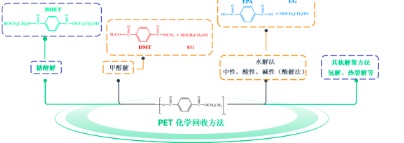rPET Materials: Background and Policy Analysis
AI Auto Network
2025-10-15 09:14:05
PET, with its lightweight, transparent, impact-resistant, and high gas barrier properties, has seen continuous growth in demand in fields such as beverage bottles, packaging, and polyester fibers. Currently, the global annual production has reachedMore than 80 million tonsHowever, PET waste management seriously lags behind the production rate, with over 70% of waste PET failing to be effectively recycled. This results in a large amount of post-consumer waste being...Landfill, incineration, or environmental leakageEspecially the marine/soil pollution causes persistent contamination, threatening the safety of ecosystems and food chains.
— 1 —
Physical recycling, chemical recycling
Technical Status and Limitations
PET cannot decompose naturally, and dyed or mixed waste is even more difficult to handle, exacerbating pollution accumulation.
I. Current Status and Limitations of Physical Recycling Technology
The currently high recycling rate of materials such as PET bottles mainly relies on physical recycling. Without altering the chemical structure of PET, the waste polyester materials are first identified, sorted, crushed, and cleaned, and then processed through drying, adhesion enhancement, and melt processing to regenerate the waste polyester materials into rPET pellets or fiber products.
However, this technology has obvious drawbacks.
Residual water and acidic pollutants trigger a chain reaction, leading to a decrease in the molecular weight of recycled polyester and a deterioration in performance. The majority of recycled materials are downgraded for use in low-value products (such as textile fibers), ultimately ending up in landfills or incineration, failing to achieve a closed-loop resource system.
2. Principles, Advantages, and Technological Pathways of Chemical Recycling
Chemical recycling processes mixed PET waste using specialized catalysts and reaction systems, demonstrating higher recovery efficiency and flexibility.
In chemical recycling, the molecules and chemical structure of PET change under the influence of solvents, catalysts, microwave exposure, and temperature. The macromolecular chains are broken down and converted into oligomers or monomers, and the product purity can approach that of virgin materials. These can be used to produce products in the following areas:
-
High value-added materials
-
Closed-loop recyclable food-grade packaging
-
Upgrade to high-value chemicals
Breaking through the purity limitations of physical recycling while achieving efficient processing of mixed/colored waste. Transform post-consumer PET waste into raw materials for chemical production, making it the starting point of the value chain rather than the endpoint.
Future Trends: Key Factors Driving the Industrialization of Chemical Recycling
The chemical recycling of PET waste involves various methods, including glycolysis, methanolysis, hydrolysis, enzymatic hydrolysis, and ammonia hydrolysis. Due to issues such as high technical complexity and cost constraints, large-scale application is still somewhat limited, and currently, the proportion of chemical recycling of PET is less than 5%. However, it will still be a key lever for transforming waste treatment in the future.
 To eliminate PET pollution, it is necessary to promote the conversion of waste into monomers, oligomers, intermediates, and finished products, while balancing economic impact, consumer demand, recycling legislation, and cost control. This approach aims to break through the technical bottlenecks of physical recycling and promote the large-scale application of chemical recycling. Physical recycling addresses the symptoms, whereas chemical recycling addresses the root cause. Therefore, chemical recycling can be regarded as an effective complement to physical recycling.
To eliminate PET pollution, it is necessary to promote the conversion of waste into monomers, oligomers, intermediates, and finished products, while balancing economic impact, consumer demand, recycling legislation, and cost control. This approach aims to break through the technical bottlenecks of physical recycling and promote the large-scale application of chemical recycling. Physical recycling addresses the symptoms, whereas chemical recycling addresses the root cause. Therefore, chemical recycling can be regarded as an effective complement to physical recycling.
— 2 —
Policy and brand dual-drive
Mandatory Application of Accelerated Regeneration Materials
Major economies such as the EU, China, and the United States have legislated mandatory usage ratios of recycled materials in plastic products. Major brands are also continuously innovating and strategically positioning themselves in the field of rPET application, publicly setting ambitious recycling targets, including material substitution rates, closed-loop recycling timelines, and carbon reduction commitments.
Policies in various countries are being implemented continuously, and the proportion of recycled materials used in products is constantly increasing. These policies have created a stable market demand for rPET.
【Copyright and Disclaimer】The above information is collected and organized by PlastMatch. The copyright belongs to the original author. This article is reprinted for the purpose of providing more information, and it does not imply that PlastMatch endorses the views expressed in the article or guarantees its accuracy. If there are any errors in the source attribution or if your legitimate rights have been infringed, please contact us, and we will promptly correct or remove the content. If other media, websites, or individuals use the aforementioned content, they must clearly indicate the original source and origin of the work and assume legal responsibility on their own.












